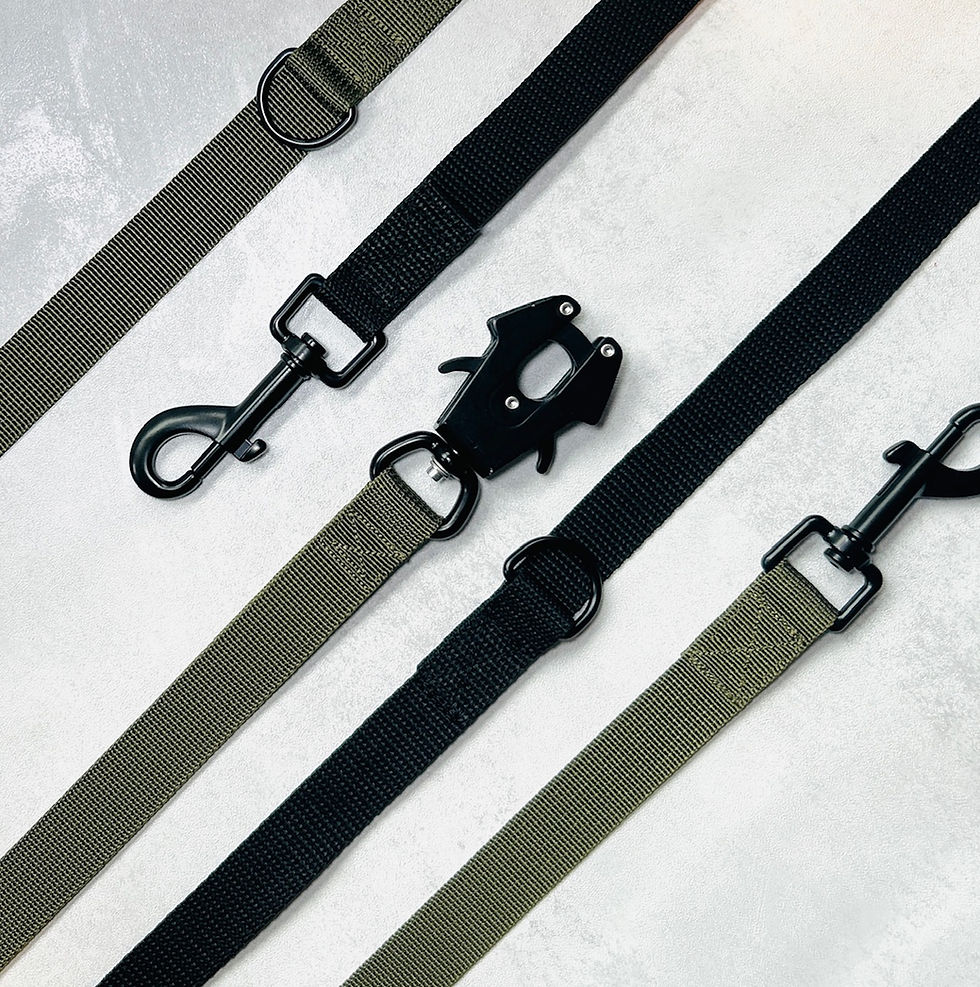Moving Beyond Transactional Relationships with Our Dogs
- Cat Hamilton

- Feb 7
- 4 min read
We often think of training as a process of getting our dogs to behave in a certain way, with treats acting as our main tool of reinforcement. But what if we shifted our focus from training to connection? Instead of seeing interactions as a series of transactions—'do this, get that'—we can create a relationship built on trust, presence, and understanding.
Many of us have been conditioned to use rewards as a way of controlling behaviour, not just with our dogs but in our everyday lives. We do it with children—feeding them when they cry, giving them sweets to keep them quiet—and this pattern extends into how we engage with our dogs. It’s an easy trap to fall into, but over time, it can erode genuine connection and mutual understanding.
When we rely on treats as the primary motivator, we risk creating a relationship based on expectation rather than trust. Dogs who are constantly rewarded for compliance may struggle to engage naturally with their caregivers, learning to respond only when there’s something in it for them.
For caregivers, this approach can lead to frustration, especially when a dog refuses to cooperate without a reward. It also places an emotional distance between human and dog—rather than sharing experiences and working together, interactions become about negotiation rather than connection.
Dogs who are conditioned to expect treats for every action can become demanding and difficult to manage. They may refuse to comply unless a food reward is present, leading to a cycle where caregivers feel like they constantly have to bribe their dogs into cooperation. This can be exhausting, both mentally and emotionally. Instead of enjoying time together, caregivers may find themselves in a constant state of redirection, distraction, and reward-seeking management.
This dependence also prevents dogs from learning self-regulation. If a dog jumps up at people or reacts anxiously to a situation, simply offering a treat to stop the behaviour doesn’t teach them how to process their emotions. Instead, it reinforces their reliance on external validation rather than helping them develop resilience and calmness from within.
When Treat Dependence Becomes Harmful
Treat-based interactions can sometimes lead to unsafe situations. For example, a dog that has been taught to always trade an item for a treat may refuse to relinquish something dangerous, such as a sharp object or toxic food, unless they are given something in return. If this expectation is not met, they may resort to chewing or guarding, increasing the risk of injury or ingestion of harmful substances.
Similarly, excessive reliance on food as a distraction can mask underlying emotional needs. If a dog is barking excessively, fearful, or reactive, simply offering a treat to quiet them does not address the root of the issue. Instead, it teaches them that their discomfort will be temporarily pacified rather than resolved.
Building a relationship based on trust rather than transaction takes time. It requires patience, consistency, and a shift in how we respond to undesired behaviours. Instead of reacting impulsively or using treats to appease anxious behaviours, we can focus on rewarding the moments when our dogs are calm, engaged, and making good choices.
If a dog is anxious or reactive in a situation, our instinct might be to quickly offer food to distract or comfort them. But imagine if, when you were upset or overwhelmed, someone just threw food at you instead of taking the time to understand what was wrong. It wouldn’t make you feel truly seen or supported. The same is true for our dogs. They need us to be present, to acknowledge their emotions, and to guide them towards a more balanced response rather than just placating them with treats.
Rather than using treats as a default, we can shift our focus to deepening the bond with our dogs. Here’s how:
Be Present – Spend time with your dog without an agenda. Observe their body language, emotions, and how they respond to different environments.
Engage Naturally – Reward calmness and voluntary engagement with your presence, touch, or a soothing voice rather than always relying on food.
Create a Safe Space – If your dog hesitates to let go of an object, avoid turning it into a battle of wills. Build trust by teaching a natural give-and-take dynamic through play and positive reinforcement.
Acknowledge Emotional Needs – If your dog is barking or anxious, don’t just pacify them with a treat. Address their feelings by providing reassurance, structure, and a sense of safety.
Reward Desired Behaviours – Instead of responding to anxiety or undesirable actions with food, focus on reinforcing moments of calm, curiosity, and relaxation. This helps break the cycle of being rewarded for stress-based reactions and encourages emotional resilience.
Treats can be useful, but they should not be the foundation of our relationship with our dogs. By focusing on presence, trust, and emotional understanding, we can create a bond that is built on genuine connection rather than transactions. When we choose to engage with our dogs in a way that honours their emotional needs, we foster a relationship where they respond not because they expect a reward, but because they feel safe and understood.











Comments